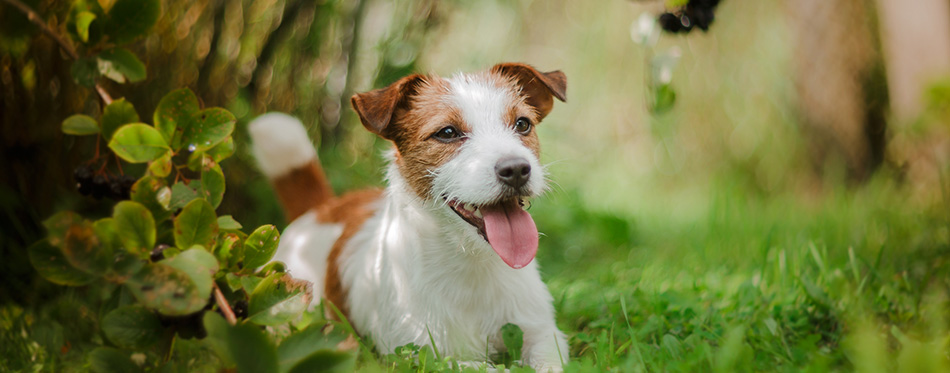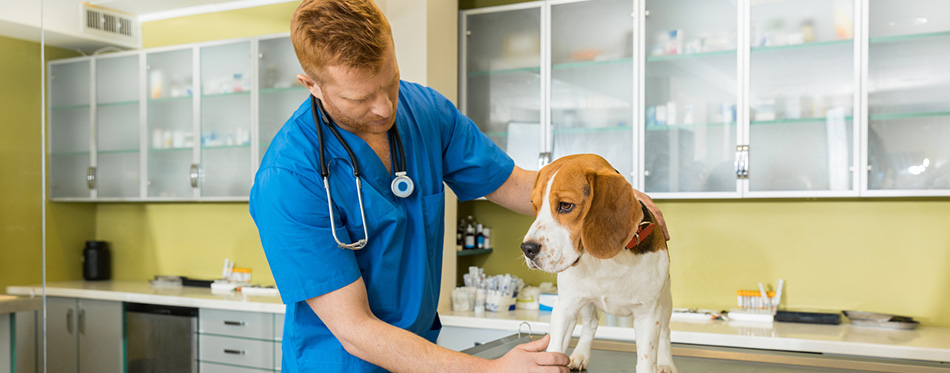As we know, dogs are curious and adventurous animals as any puppy parent will confirm. While curiosity and intrigue are excellent traits, after all, they mean your pup is mentally stimulated and having fun, they can be dangerous on some occasions. Some dogs are naturally inclined to sniff, taste or eat anything they see which is new to them. For this reason it’s important to keep your house, or at least your dog’s environment, clutter-free and puppy-proofed as much as possible. Unfortunately, accidents can happen any time to even the most organized and careful individuals. So, even your best efforts to puppy-proof your house might not eb enough to stop your dog getting their paws on things they shouldn’t. In this article, we’re going to cover what to do if your dog eats plastic as it’s best to be prepared in case of emergencies.

How to Prevent Risk
Removing risks is possibly the easiest way to ensure your pup doesn’t eat anything they shouldn’t. When raising a dog, this step is vital because young pups don’t know any better so you need to remove any hazards. Socks, shoes, cables, bags and cushions are the most common victims of a young pup’s curiosity so you’ll need to monitor your pup careful when these items are around. By monitoring your pup around these items and removing them from reach when you’re not using them, you’ll have the best chance of minimizing risk.
You might be wondering about plastic toys, however. These can be problematic for a few reasons. Firstly, by purchasing high-quality dog toys you can be sure they will last a long time, even if your pup is particularly rough when playing with them. Secondly, you’ll need to make sure the toys are in a suitable condition if they’ve been used for a long time. If you notice the plastic is warped or damaged in some way due to overuse, you should remove these before they pose a risk from falling apart. Lastly, keep your dog’s toys in a safe and secure place when you’re not around to supervise them. Of course, some toys will be fine as your dog needs to stay mentally stimulated while you’re away, but you should choose these carefully. Avoid toys which pose a risk like the previous examples and don’t leave anything around that’s small enough to be swallowed or chewed through.
You may also like our article on Dog Toy Boxes.
What to Do If Your Dog Eats Plastic
Despite all of the safety measures and precautions you can make, accidents can unfortunately happen so it’s best to be prepared by learning what you should do in the event that your dog swallows plastic. If you think your dog might have swallowed some plastic but you aren’t sure or you didn’t see it yourself, it’s best to call the vet immediately. If you have good reason for concern (like finding torn bits of plastic or broken toys) your vet will likely want to see your dog to assess any potential damage and to remove any foreign objects.
If you see your dog eating plastic or you’re sure it’s happened, call the vet immediately and ask for their advice. You should also check your dog’s mouth to see if the object is still there. Follow your vet’s instructions carefully as they’ll know what’s best for your dog. If the plastic is still in your dog’s mouth, they might recommend that you remove it yourself if it is safe to do so. Otherwise, it’s more likely that they’ll want to see your precious pooch as soon as possible. You’ll need to describe your dog’s symptoms, such as choking, unconsciousness, tenderness or other signs of discomfort.
Removing Plastic from Your Dog’s Mouth
If plastic is in your dog’s mouth and your vet recommends that you remove it, it’s best if you have a helper to provide some assistance. You’ll need to be careful when removing a foreign object from your dog’s mouth for the safety of you, your pup, and any helpers. Start by holding your dog’s mouth open with a hand on the upper and lower jaw respectively. Use your dog’s lips to cover its teeth so they don’t bite down on your fingers. While you do this, have a helper remove the plastic carefully and gently by using an index finger (or two fingers at most if it’s a large dog). If you’re doing this alone, secure the jaws as mentioned, and use your index finger to gently swipe the object to the front of the mouth.

Heimlich Maneuver for Dogs
If the plastic is lodged in the back of throat, blocking the windpipe or causing your dog to choke, the vet might recommend that you perform the Heimlich maneuver. To do this, place your dog on its back, place one hand palm-down on its torso (just under the ribcage) and quickly push inwards and forwards. Although this works best for small dogs, it can be effective by slightly changing the method.
To perform the maneuver on a larger dog, you can do this while the dog is standing or lying on their side. If standing, stand over your dog with your hands clasped under them, placing them just under the ribcage and push inwards and forwards quickly. If your dog is lying down, position them in their side and repeat the same maneuver as with a small dog. However, you’ll have to place your other hand behind their back to support them.
If performed successfully, the foreign object will be dislodged and your dog should spit it out.
Things to Keep in Mind
It’s important that you don’t induce vomiting to remove the object, nor should you try to remove plastic which is lodged in the back of the throat as this could cause more damage when being removed. While plastic isn’t toxic, it can cause serious harm if ingested and not removed safely. By acting quickly, calling your vet and doing exactly as they say, you’ll significantly improve your dog’s chances of recovery.
Source:
- What to Do for Dogs Who Ate Foreign Objects – Michelson Found Animals

